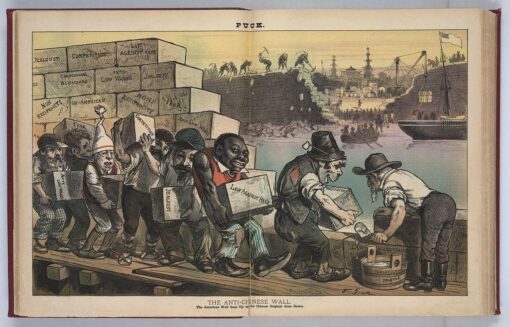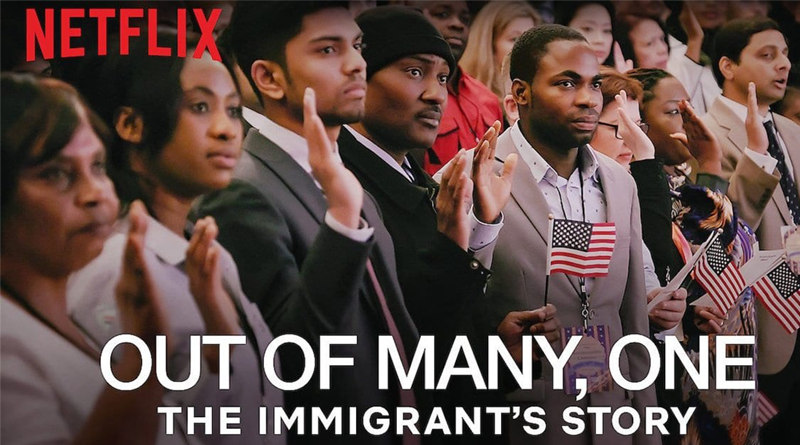This was written by Myla, one of our student interns. The opinions expressed herein do not reflect those of Civitas other than respect for the value of open dialogue.
Immigrants are essential to the success of our country. They diversify our lives in many ways. They create innovative ideas for science, technology, engineering, and mathematics (STEM). Immigrants contribute to America in every way from construction, farming, and maintenance occupations to running small businesses. They bring a new perspective to our communities, schools, workplaces, and institutions. Quite frankly, immigrants affect every part of our life.
The Netflix documentary, Out of Many, One highlights the process of becoming a citizen in the United States. The film is about a half-hour look at the American process of naturalization during a time of great divisiveness. Though the film never mentions his name, it is obvious that the documentary was created during the Trump era. Many of the immigrants indirectly refer to Trump by using “the current administration” or “time of insecurity.” Since the administration was changing immigration policies, in January 2017, “the New York Historical Society created The Citizenship Project as a way of helping legal immigrants on their path to becoming American citizens.” Many of the immigrants are asylees and lawful permanent residents. An asylee is a person who is seeking or has been granted political asylum. A lawful permanent resident, also known as a “green card” holder, is a non-citizen who has been granted authorization to live and work in the United States on a permanent status. In the past, having asylum or a green card would be enough protection against deportation. However, the Trump administration made many drastic changes. As a result, many immigrants felt the need to become American citizens.
Ironically, the group of immigrants are taught by Samantha Rikers, who is also an immigrant from the Netherlands. According to the film, immigrants have to study 100 questions about American history. They will be asked up to 10 of those questions. In order to pass the test, immigrants have to answer six questions correctly.
Rikers shows her students a portrait of immigrants building an anti-Chinese wall. The wall reminds the immigrants, as well as the viewers, of Trump’s wall across the United States-Mexico border. One of the students, Dipna states, “They want the best of each country, but don’t want the people, just the products from it.” As always, American history will repeat itself.
One of the things that stuck out to me the most was how students were being taught that everyone in America is an immigrant. Therefore, anyone who migrates to our country should be welcomed. Quite frankly, the only people who are not immigrants in the United States are Native Americans. In the film, everyone seeking citizenship believes that America is the “land of the free.” They consider our country to be the greatest country in the world. Many of them have built a life here for years.

At the end of the film, the late Supreme Court Justice Ruth Bader Ginsburg is showcased at a naturalization ceremony. “We are a nation made strong by people like you. People who have traveled long distances, overcome great obstacles, all to provide a better life for themselves and their families,” Ginsburg exclaims. The film is a great resource to utilize to introduce people to immigration. However, as a person who is passionate about immigration, the documentary was not as in depth as I would have preferred it to be.
In comparison to other immigration films, this one falls short. The short run time prevents viewers from diving into the trials and tribulations of immigration. Also, there is not enough character development in the movie. This makes it very hard for viewers to build connections with the people in the film. Out of Many, One has its cons, but viewing this movie can be a great way to spark the conversation on immigration reform.


Pingback:Index of 2021 Intern Student Blog Posts - CIVITAS-STL